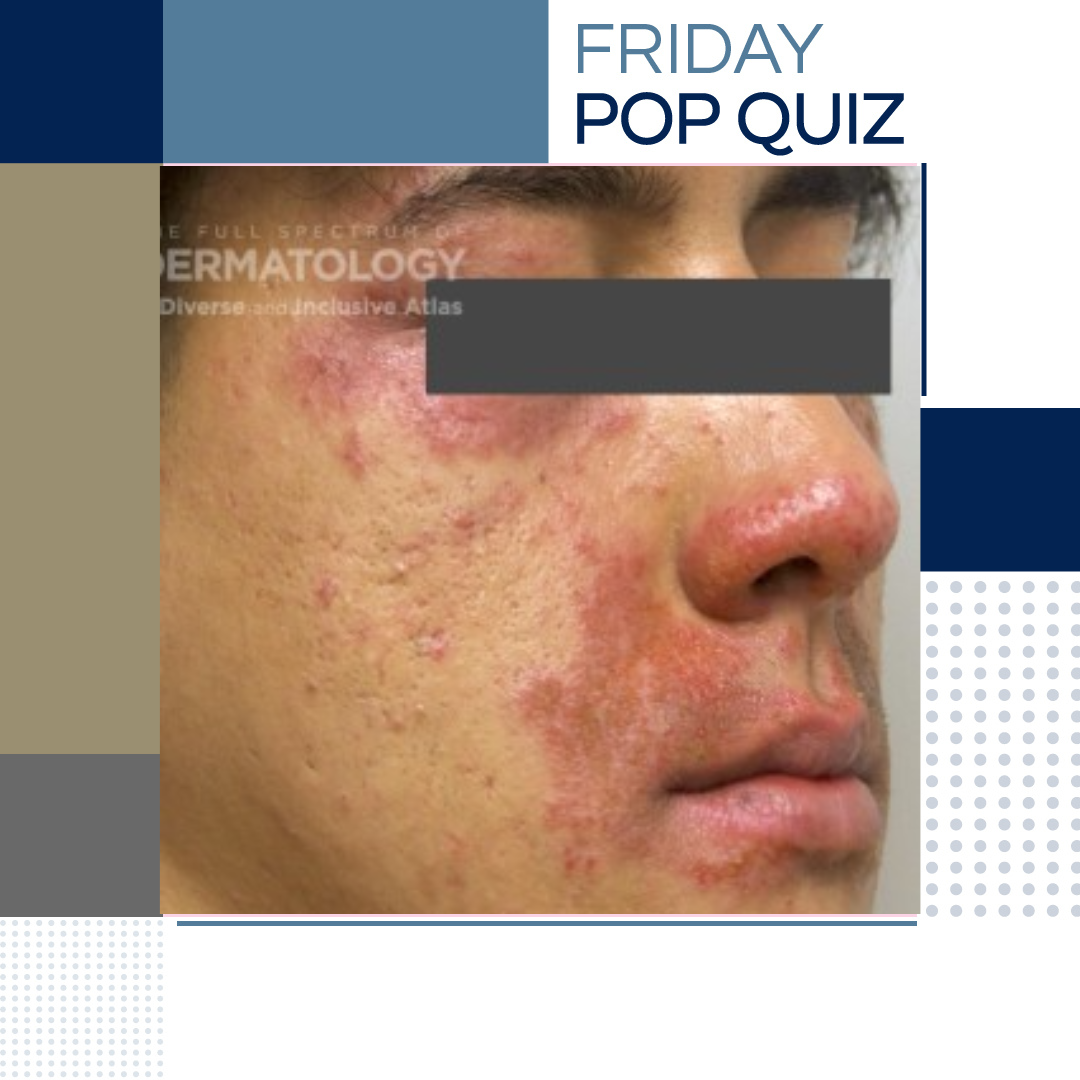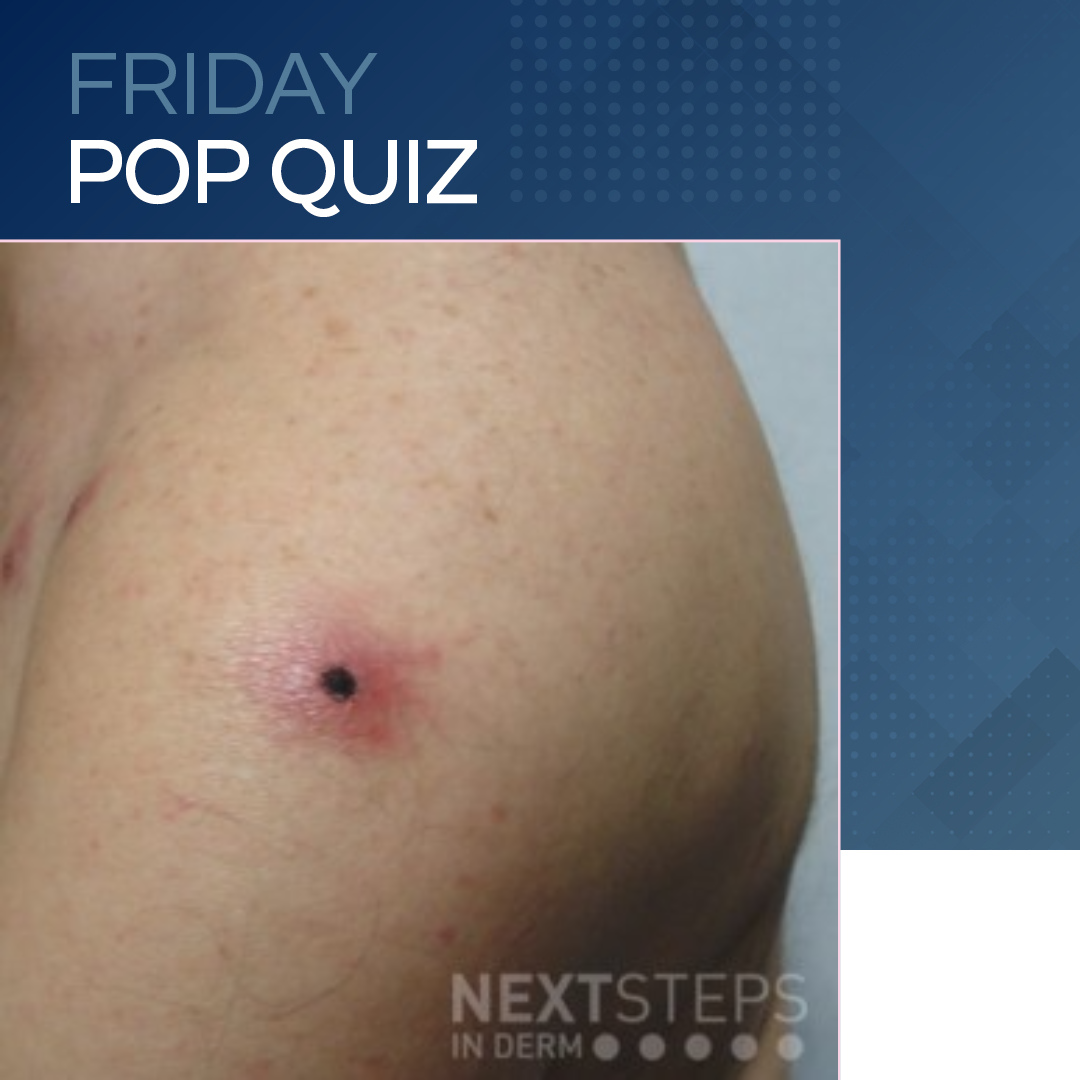Friday Pop Quiz 2/16/2024
 Which of the following cells is most likely to be seen in a biopsy of a lesion from this 1-day-old child?
A. Eosinophils
B. Histiocytes
C. Lymphocytes
D. Mast cells
E. Neutrophils
To find out the correct answer and read the explanation, click here. …
Which of the following cells is most likely to be seen in a biopsy of a lesion from this 1-day-old child?
A. Eosinophils
B. Histiocytes
C. Lymphocytes
D. Mast cells
E. Neutrophils
To find out the correct answer and read the explanation, click here. …
 Which of the following cells is most likely to be seen in a biopsy of a lesion from this 1-day-old child?
A. Eosinophils
B. Histiocytes
C. Lymphocytes
D. Mast cells
E. Neutrophils
To find out the correct answer and read the explanation, click here. …
Which of the following cells is most likely to be seen in a biopsy of a lesion from this 1-day-old child?
A. Eosinophils
B. Histiocytes
C. Lymphocytes
D. Mast cells
E. Neutrophils
To find out the correct answer and read the explanation, click here. … 

 A 41-year-old woman presents for evaluation of lesions on her face as shown. She previously noticed small bumps on her face in affected areas 3 weeks ago, after which she used desonide ointment daily for roughly 2 weeks with expansion of the affected areas. Which of the following is the most appropriate next step in the management of the patient?
A. Oral tetracycline
B. Patch testing
…
A 41-year-old woman presents for evaluation of lesions on her face as shown. She previously noticed small bumps on her face in affected areas 3 weeks ago, after which she used desonide ointment daily for roughly 2 weeks with expansion of the affected areas. Which of the following is the most appropriate next step in the management of the patient?
A. Oral tetracycline
B. Patch testing
…  A 56-year-old man with a history of lower lid blepharoplasty presents for follow-up 3 days after undergoing botulinum toxin injection into the lower eyelid for periocular rhytides. Which of the following is the most likely cause of the patient’s findings?
A. Allergy to botulinum toxin
B. Formation of festoon
C. Infraorbital malar edema
D. Normal physiologic changes
E. Undiagno …
A 56-year-old man with a history of lower lid blepharoplasty presents for follow-up 3 days after undergoing botulinum toxin injection into the lower eyelid for periocular rhytides. Which of the following is the most likely cause of the patient’s findings?
A. Allergy to botulinum toxin
B. Formation of festoon
C. Infraorbital malar edema
D. Normal physiologic changes
E. Undiagno …  A 34-year-old man with no past medical conditions presents with lesions as shown. Of the following, what is the most likely causative agent?
A. Aspergillus flavus
B. Group A beta-hemolytic streptococci
C. Pseudomonas aeruginosa
D. Klebsiella
E. Proteus
To find out the correct answer and read the explanation, click here. …
A 34-year-old man with no past medical conditions presents with lesions as shown. Of the following, what is the most likely causative agent?
A. Aspergillus flavus
B. Group A beta-hemolytic streptococci
C. Pseudomonas aeruginosa
D. Klebsiella
E. Proteus
To find out the correct answer and read the explanation, click here. …  A 39-year-old woman with a history of alopecia areata presents for evaluation
of multiple macules and patches on her left mandibular face. She developed
these lesions slowly over several years, where they have remained stable for
many years. The patient’s goal now is to achieve repigmentation of the lesions.
The patient has previously used topical hydrocortisone 1% cream on the
lesions …
A 39-year-old woman with a history of alopecia areata presents for evaluation
of multiple macules and patches on her left mandibular face. She developed
these lesions slowly over several years, where they have remained stable for
many years. The patient’s goal now is to achieve repigmentation of the lesions.
The patient has previously used topical hydrocortisone 1% cream on the
lesions …